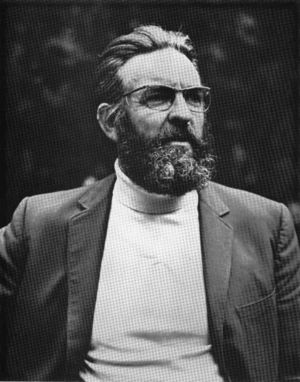
Banham was born in Norwich, England (2 March 1922 – 19 March 1988) Maverick architectural theorist and historian; modernism and pop-culture revisionist. The younger Banham was educated at King Edward VI School, Norwich, UK. Too young to join the military during World War II, he worked as an engine fitter at the Bristol Aeroplane Company. Banham entered the Courtauld Institute of London University in 1945 to study art history. During this time he wrote criticism on contemporary architecture for The Architectural Review and other journals. As a critic, he particularly espoused modernist architecture. Banham wrote his thesis under Nikolaus Pevsner at the Warburg, Theory and Design in the First Machine Age which appeared as a book in 1960. His topic focused on Expressionism and Futurism’s contribution to architecture, but it became the definitive text throughout the world on the modern movement in architecture In 1959 Banham was hired to the permanent staff of The Architectural Review. He began lecturing at the Bartlett School of Architecture, University College, London in 1960, rising to senior lecturer in 1964. Banham’s revisionist stance on Modern architecture influenced the Independent Group (IG), a loose association of artists, architects and historians connected with the London-based Institute of Contemporary Art. In 1966 his book on modernist architecture,The New Brutalism appeared. He championed the 1960s futurism of the Archigram group. Banham rose to professor of the history of architecture in 1969. At the same time, Banham had found a Lebensberuf in appreciating Los Angeles, California. His seminal Los Angeles: The Architecture of Four Ecologies appeared in 1971. The success of Theory and Design and Architecture of the Well-tempered Environment, particularly in the United States, brought Banham an offer to teach there in 1976. He accepted the chair of the department of design studies at the State University of New York at Buffalo. By 1980, he had been named professor of art history at the University of California, Santa Cruz. In California he was a member of Architect-Selection Panel for the J. Paul Getty Trust, which, in 1984, selected Richard Meier to design the museum in Santa Monica, CA. He joined the faculty of New York University’s Institute of Fine Arts as Sheldon H. Solow Professor of the History of Architecture in 1988, but never taught. Bonham was diagnosed with cancer the same year and returned to England where he died at age 66.
He was influenced by Richard Buckminster Fuller. He was an American engineer, architect, and futurist who developed the geodesic dome.The only large dome that can be set directly on the ground as a complete structure and the only practical kind of building that has no limiting dimensions.
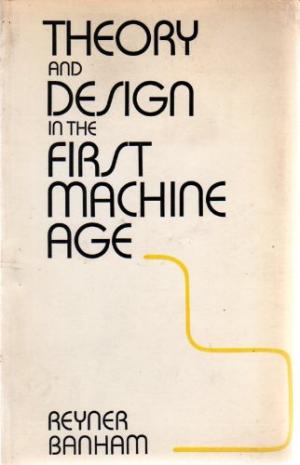
First published in 1960, Theory and Design in the First Machine Age has become required reading in numerous courses on the history of modern architecture and is widely regarded as one of the definitive books on the modern movement. It has influenced a generation of students and critics interested in the formation of attitudes, themes, and forms which were characteristic of artists and architects working primarily in Europe between 1900 and 1930 under the compulsion of new technological developments in the first machine age. Banham’s claim has been that shapes, proportions and rhythms do not have aptness sui generis but only in relation to a number of symbolically satisfiable needs.Banham has been unequivocal and tough-minded about this. The designer of a motorcycle, the “stylist,” is not working for the sensibility that might appreciate the Parthenon. The shape of a motorcycle, he claims, is based on values that are not eternal but transient; the shape symbolizes speed and potency in a way which, because of the continual progress of technology, may be obsolete in a year’s time. Appearance is less the result of function than the promise of it and the final type.

THE MACHINE AGE
is an era that includes the early 20th century, sometimes also including the late 19th century.Considered to be at a peak in the time between the first and second world wars, it forms a late part of the Second Industrial Revolution.The digital era has been called the Second Machine Age, with its increased focus on machines that do mental tasks.Europe was in disarray at the end of the Great War in 1918, the United States was entering a period of extravagant development of the man-made environment: majestic skyscrapers challenging old records of height; light, airy suspension bridges ringing new urban landscapes. Streamlined locomotives appeared, as well as airplanes and automobiles, concrete highways, airports and service stations – all bringing news of modernity into rural and urban worlds. In the more remote sections, giant dams and their hidden turbines represented the transforming force of electricity.
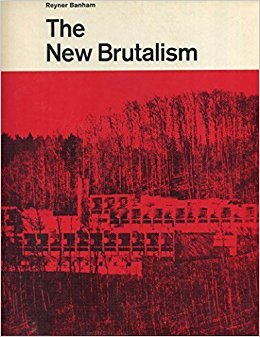
Brutalist architecture is a movement in architecture that flourished from the 1950s to the mid-1970s, descending from the modernist architecture movement of the early 20th century. Brutalist buildings are usually formed with repeated modular elements forming masses representing specific functional zones, distinctly articulated and grouped together into a unified whole. Concrete is used for its raw and unpretentious honesty, contrasting dramatically with the highly refined and ornamented buildings constructed in the elite Beaux-Arts style. Surfaces of cast concrete are made to reveal the basic nature of its construction, revealing the texture of the wooden planks used for the in-situ casting forms. Brutalist building materials also include brick, glass, steel, rough-hewn stone, and gabions.
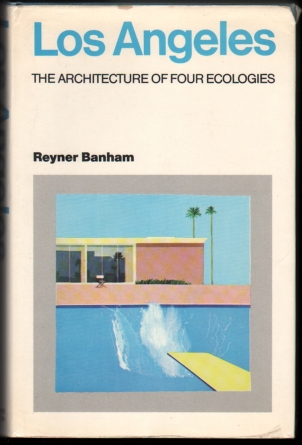
First published in 1971 Reyner Banham’s Los Angeles: The Architecture of Four Ecologies is by now well established as a classic of (Post)modern architectural journalism. Reyner Banham examined the built environment of Los Angeles in a way no architectural historian before him had done, looking with fresh eyes at its manifestations of popular taste and industrial ingenuity, as well as its more traditional modes of residential and commercial building. His construct of “four ecologies” examined the ways Angelenos relate to the beach, the freeways, the flatlands, and the foothills. Banham delighted in this mobile city and identified it as an exemplar of the posturban future. In a spectacular new foreword, architect and scholar Joe Day explores how the structure of Los Angeles, the concept of “ecology,” and the relevance of Banham’s ideas have changed over the past thirty-five years.
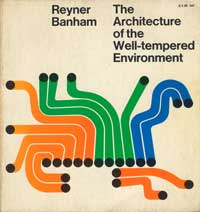
Reyner Banham was a pioneer in arguing that technology, human needs, and environmental concerns must be considered an integral part of architecture. No historian before him had so systematically explored the impact of environmental engineering on the design of buildings and on the minds of architects. In this revision of his classic work, Banham has added considerable new material on the use of energy, particularly solar energy, in human environments. Included in the new material are discussions of Indian pueblos and solar architecture, the Centre Pompidou and other high-tech buildings, and the environmental wisdom of many current architectural vernaculars.

